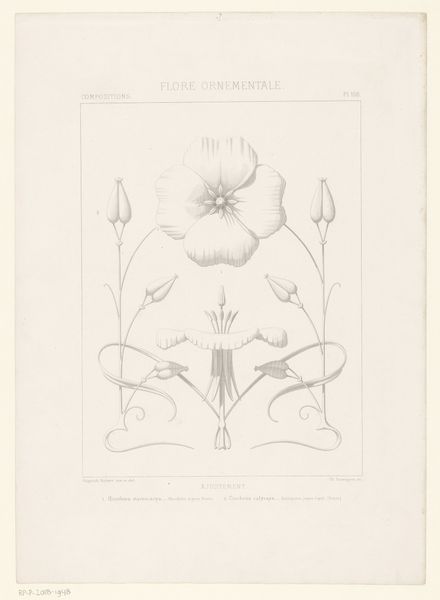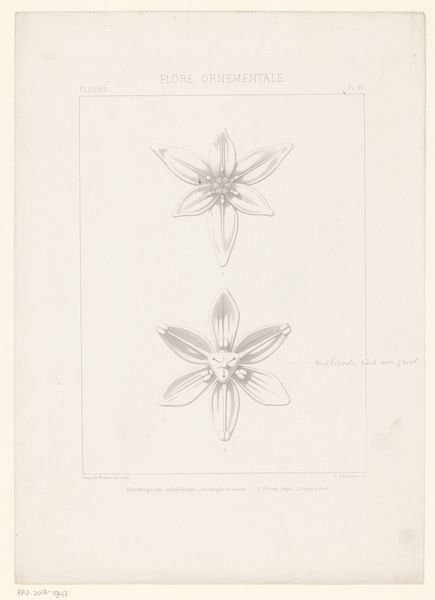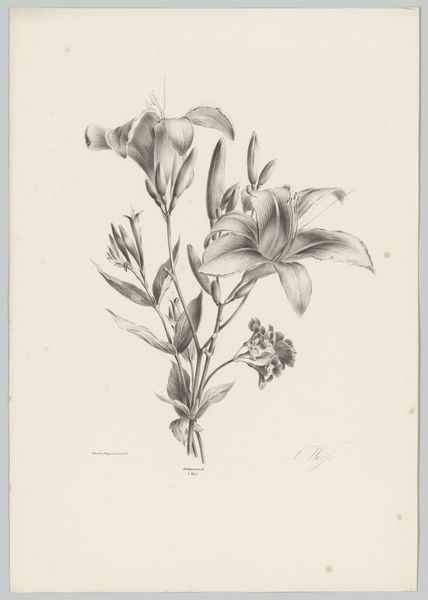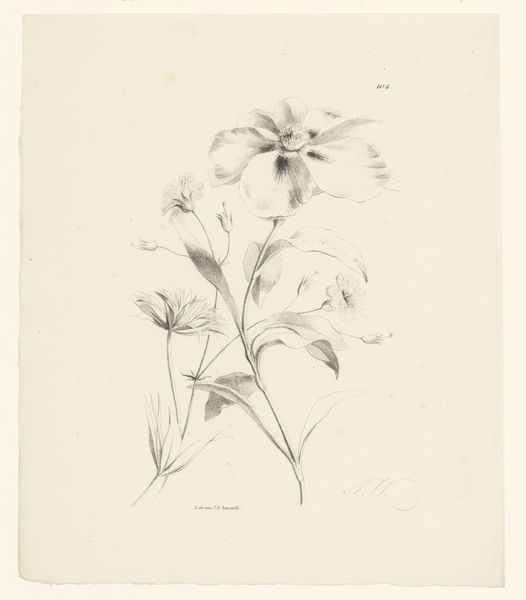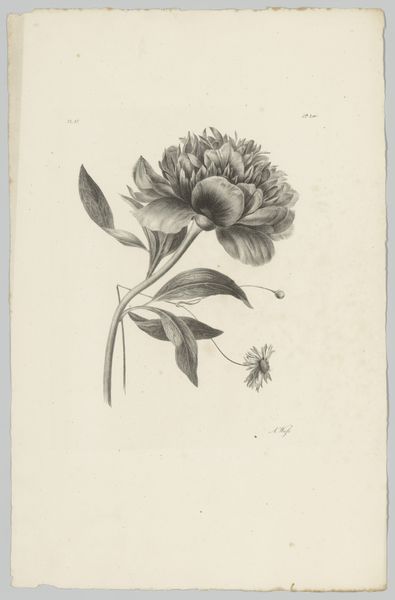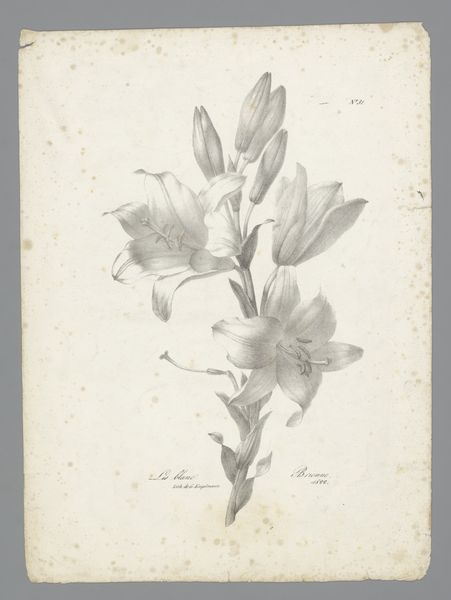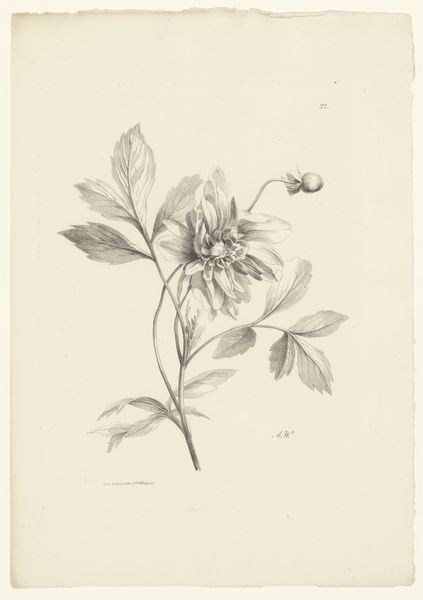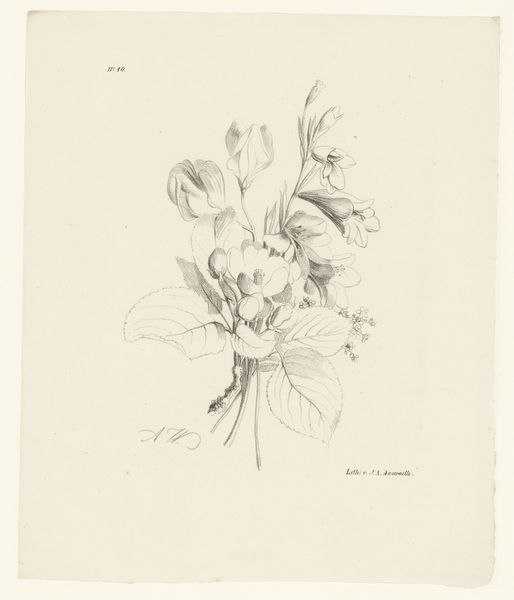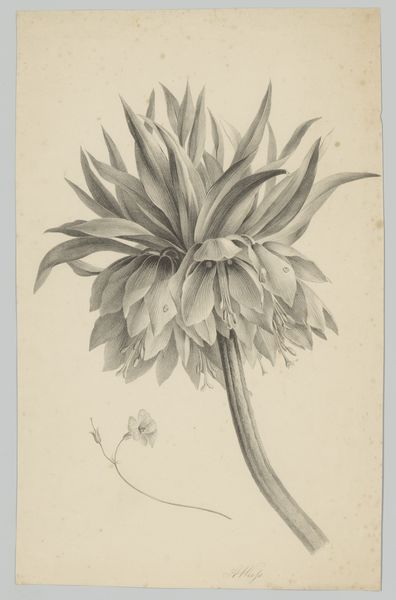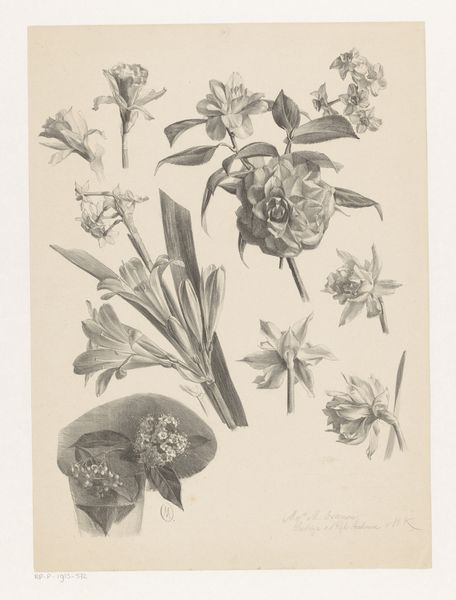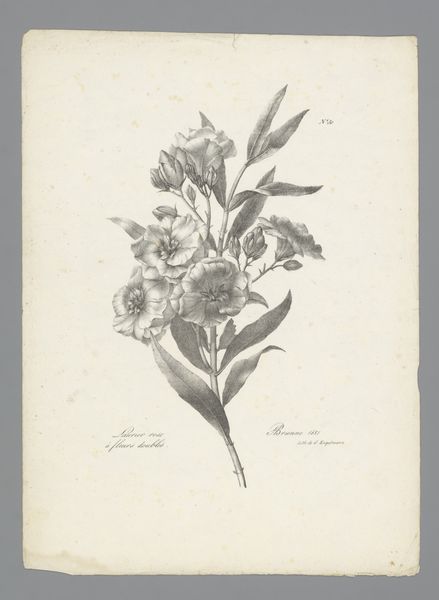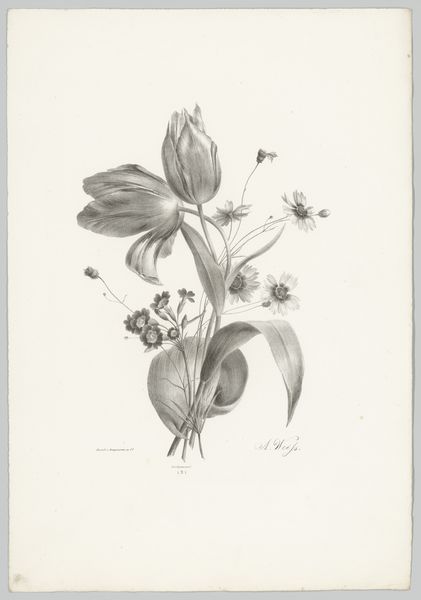
Studieblad met verschillende aanzichten van bloemen, waaronder lelies 1842 - 1885
0:00
0:00
print, engraving
# print
#
line
#
engraving
#
botanical art
Dimensions: height 327 mm, width 257 mm
Copyright: Rijks Museum: Open Domain
Editor: This is Claude Sauvageot's "Studieblad met verschillende aanzichten van bloemen, waaronder lelies," or "Study Sheet with different views of flowers, including lilies," an engraving from between 1842 and 1885. It's a surprisingly delicate print, considering the likely industrial process of its creation. What strikes you about this piece? Curator: What interests me most is the intersection of scientific illustration and artistic production evident in this engraving. The lines are precise, almost mechanical, which highlights the means of its production, especially considering its reproductive nature. The function here lies in dissemination, suggesting how images and information were consumed during this period. The work itself, the engraving process, required specialized labor. Consider, who would have been doing this work, and what kind of social conditions allowed for this blend of art and industry? Editor: That’s interesting – I hadn’t thought about the labor behind it. So, you’re saying this isn't just a pretty picture of flowers, but a document of social and economic conditions? Curator: Precisely. Look closely at the details, at the precision and the reproducibility. What does this say about the intended audience, their needs, and the value placed on both scientific accuracy and accessible imagery? Think about the intended usage of the engraving. Was it for a textbook, a catalog? This would directly impact its value, accessibility, and ultimate consumption. Editor: I guess I was viewing it purely aesthetically. Now, I see how important it is to consider the method and the hands that created this print. Curator: It's about recognizing art not just as an isolated object, but as a product deeply embedded in its material and social context. Looking beyond just 'beauty' forces us to think about labour and how accessible this was for popular consumption in society. Editor: Thanks! I'll be sure to look for those production aspects moving forward.
Comments
No comments
Be the first to comment and join the conversation on the ultimate creative platform.

